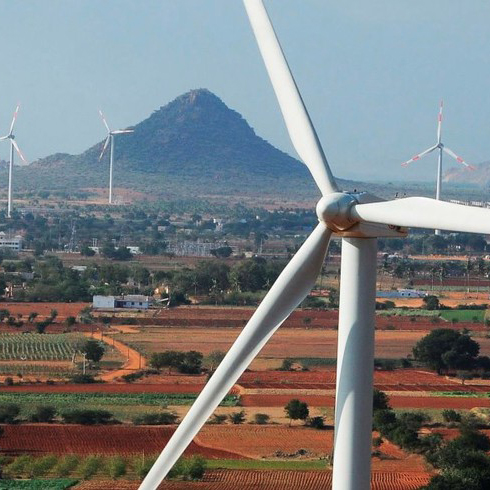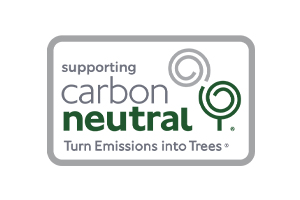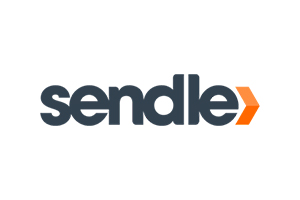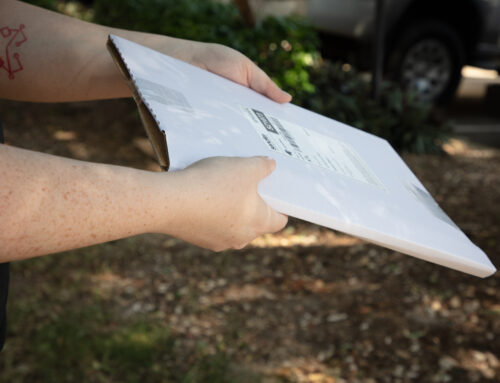Transforming our workplace for a better tomorrow
I’m super happy to tell you all that, since starting our measurements in 2020 we have reduced our greenhouse emission estimates by 15%!
We switched our energy provider over to 100% renewable energy and in doing so have reduced our carbon emissions by 40 tonnes. We have also moved a huge number of our freight jobs over to an alternative dispatch company and have seen staff travel drop significantly with now a number of us walking to work. We are doing our absolute best to try and completely reduce our need for paper print-outs in the lab and so many other little bits and bobs here and there that all make a difference. Now we are certainly no experts and certainly still have a long way to go as far as reducing our workplace emissions go. But understanding our carbon footprint is a knowledge we thirst for and will continue to explore as we grow and evolve into the future. My purpose in sharing this is to encourage your business to volunteer to do the same.
What can you do?
Offsetting your emissions is not an instant solution. If you’re going to spend money on anything it should be on reducing your workplace emissions in the first place. Taking stock of where you’re making the most impact on the environment can be a pretty big eye-opener. It allows you to make meaningful changes to your practices and encourages systems thinking within the workplace.
Have you switched to a renewable energy company? Could you go as paperless as possible? Where can you support more sustainable practices? Can you or your staff find alternative transport to reduce the number of cars on the road? Are you recycling? Do you regularly assess waste management? Are you using energy-efficient lighting and appliances? Are you caring for your equipment? Are you using what you have? Can you apply multiple functions to your resources?
Measuring your emissions gives you the diving board you need to jump straight onto the parts of your business that need attention the most and from there take action. Collecting all the data you need to run through a carbon calculator can seem like a daunting task, but it’s not. It made it easier over our first two calculations by extrapolating the information from our busiest month of the year, so for us, it’s over-estimated. But now with the foresight of what we need, the future will hold better and more organised data to work with.

Once you have your total emissions worked out it’s up to you if you want to purchase offsets, but it is important to ensure that whatever offset project that you choose is verified and has a measurable impact. We choose Verified Carbon Standard projects through an Australian-based company, Carbon Neutral (who recommended the Chakala Wind Power Project in India) Carbon Neutral is also a great source of support and information.
The time you’ve taken to read this is appreciated, and I hope it results in research or a conversation, ideally – a commitment for us all to start where we are, use what we have and do what we can.
Transforming our workplace for a better tomorrow
I’m super happy to tell you all that, since starting our measurements in 2020 we have reduced our greenhouse emission estimates by 15%!
We switched our energy provider over to 100% renewable energy and in doing so have reduced our carbon emissions by 40 tonnes. We have also moved a huge number of our freight jobs over to an alternative dispatch company and have seen staff travel drop significantly with now a number of us walking to work. We are doing our absolute best to try and completely reduce our need for paper print-outs in the lab and so many other little bits and bobs here and there that all make a difference. Now we are certainly no experts and certainly still have a long way to go as far as reducing our workplace emissions go. But understanding our carbon footprint is a knowledge we thirst for and will continue to explore as we grow and evolve into the future. My purpose in sharing this is to encourage your business to volunteer to do the same.
What can you do?
Offsetting your emissions is not an instant solution. If you’re going to spend money on anything it should be on reducing your workplace emissions in the first place. Taking stock of where you’re making the most impact on the environment can be a pretty big eye-opener. It allows you to make meaningful changes to your practices and encourages systems thinking within the workplace.
Have you switched to a renewable energy company? Could you go as paperless as possible? Where can you support more sustainable practices? Can you or your staff find alternative transport to reduce the number of cars on the road? Are you recycling? Do you regularly assess waste management? Are you using energy-efficient lighting and appliances? Are you caring for your equipment? Are you using what you have? Can you apply multiple functions to your resources?
Measuring your emissions gives you the diving board you need to jump straight onto the parts of your business that need attention the most and from there take action. Collecting all the data you need to run through a carbon calculator can seem like a daunting task, but it’s not. It made it easier over our first two calculations by extrapolating the information from our busiest month of the year, so for us, it’s over-estimated. But now with the foresight of what we need, the future will hold better and more organised data to work with.
Once you have your total emissions worked out it’s up to you if you want to purchase offsets, but it is important to ensure that whatever offset project that you choose is verified and has a measurable impact. We choose Verified Carbon Standard projects through an Australian-based company, Carbon Neutral (who recommended the Chakala Wind Power Project in India) Carbon Neutral is also a great source of support and information.
The time you’ve taken to read this is appreciated, and I hope it results in research or a conversation, ideally – a commitment for us all to start where we are, use what we have and do what we can.
Transforming our workplace for a better tomorrow
I’m super happy to tell you all that, since starting our measurements in 2020 we have reduced our greenhouse emission estimates by 15%!
We switched our energy provider over to 100% renewable energy and in doing so have reduced our carbon emissions by 40 tonnes. We have also moved a huge number of our freight jobs over to an alternative dispatch company and have seen staff travel drop significantly with now a number of us walking to work. We are doing our absolute best to try and completely reduce our need for paper print-outs in the lab and so many other little bits and bobs here and there that all make a difference. Now we are certainly no experts and certainly still have a long way to go as far as reducing our workplace emissions go. But understanding our carbon footprint is a knowledge we thirst for and will continue to explore as we grow and evolve into the future. My purpose in sharing this is to encourage your business to volunteer to do the same.
What can you do?
Offsetting your emissions is not an instant solution. If you’re going to spend money on anything it should be on reducing your workplace emissions in the first place. Taking stock of where you’re making the most impact on the environment can be a pretty big eye-opener. It allows you to make meaningful changes to your practices and encourages systems thinking within the workplace.
Have you switched to a renewable energy company? Could you go as paperless as possible? Where can you support more sustainable practices? Can you or your staff find alternative transport to reduce the number of cars on the road? Are you recycling? Do you regularly assess waste management? Are you using energy-efficient lighting and appliances? Are you caring for your equipment? Are you using what you have? Can you apply multiple functions to your resources?
Measuring your emissions gives you the diving board you need to jump straight onto the parts of your business that need attention the most and from there take action. Collecting all the data you need to run through a carbon calculator can seem like a daunting task, but it’s not. It made it easier over our first two calculations by extrapolating the information from our busiest month of the year, so for us, it’s over-estimated. But now with the foresight of what we need, the future will hold better and more organised data to work with.

Once you have your total emissions worked out it’s up to you if you want to purchase offsets, but it is important to ensure that whatever offset project that you choose is verified and has a measurable impact. We choose Verified Carbon Standard projects through an Australian-based company, Carbon Neutral (who recommended the Chakala Wind Power Project in India) Carbon Neutral is also a great source of support and information.
The time you’ve taken to read this is appreciated, and I hope it results in research or a conversation, ideally – a commitment for us all to start where we are, use what we have and do what we can.
Transforming our workplace for a better tomorrow
I’m super happy to tell you all that, since starting our measurements in 2020 we have reduced our greenhouse emission estimates by 15%!
We switched our energy provider over to 100% renewable energy and in doing so have reduced our carbon emissions by 40 tonnes. We have also moved a huge number of our freight jobs over to an alternative dispatch company and have seen staff travel drop significantly with now a number of us walking to work. We are doing our absolute best to try and completely reduce our need for paper print-outs in the lab and so many other little bits and bobs here and there that all make a difference. Now we are certainly no experts and certainly still have a long way to go as far as reducing our workplace emissions go. But understanding our carbon footprint is a knowledge we thirst for and will continue to explore as we grow and evolve into the future. My purpose in sharing this is to encourage your business to volunteer to do the same.
What can you do?
Offsetting your emissions is not an instant solution. If you’re going to spend money on anything it should be on reducing your workplace emissions in the first place. Taking stock of where you’re making the most impact on the environment can be a pretty big eye-opener. It allows you to make meaningful changes to your practices and encourages systems thinking within the workplace.
Have you switched to a renewable energy company? Could you go as paperless as possible? Where can you support more sustainable practices? Can you or your staff find alternative transport to reduce the number of cars on the road? Are you recycling? Do you regularly assess waste management? Are you using energy-efficient lighting and appliances? Are you caring for your equipment? Are you using what you have? Can you apply multiple functions to your resources?
Measuring your emissions gives you the diving board you need to jump straight onto the parts of your business that need attention the most and from there take action. Collecting all the data you need to run through a carbon calculator can seem like a daunting task, but it’s not. It made it easier over our first two calculations by extrapolating the information from our busiest month of the year, so for us, it’s over-estimated. But now with the foresight of what we need, the future will hold better and more organised data to work with.
Once you have your total emissions worked out it’s up to you if you want to purchase offsets, but it is important to ensure that whatever offset project that you choose is verified and has a measurable impact. We choose Verified Carbon Standard projects through an Australian-based company, Carbon Neutral (who recommended the Chakala Wind Power Project in India) Carbon Neutral is also a great source of support and information.
The time you’ve taken to read this is appreciated, and I hope it results in research or a conversation, ideally – a commitment for us all to start where we are, use what we have and do what we can.









